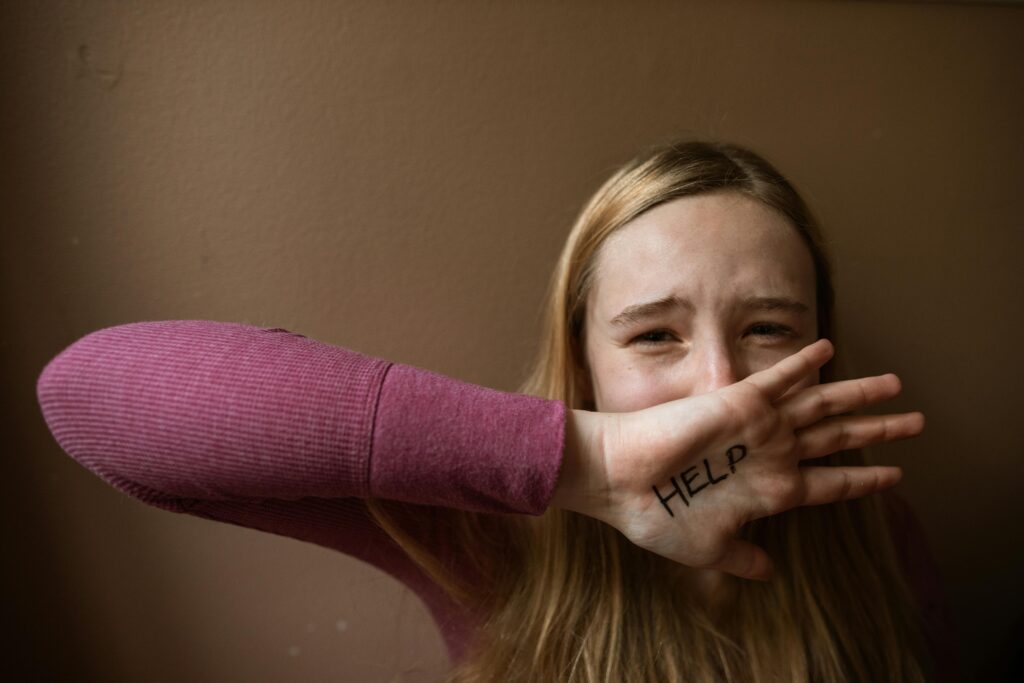Trauma is not just an event that happens in the past—it lives on in the mind and body, shaping how a person perceives the world. Post-Traumatic Stress Disorder (PTSD) is one of the most severe psychological consequences of trauma, affecting millions globally. Whether from war, abuse, accidents, or loss, trauma can fracture a person’s sense of safety, leaving deep emotional scars that persist for years.

This comprehensive guide explores trauma and PTSD in detail, covering:
- The psychological and neurological impact of trauma
- How PTSD develops and why some people are more vulnerable
- The most effective treatments backed by research
- Real-life coping strategies for survivors
By the end, you’ll have a thorough understanding of trauma’s far-reaching effects and the pathways to recovery.
What Is Trauma? A Psychological and Biological Perspective
Trauma occurs when an event is so distressing that it overwhelms a person’s ability to cope. Unlike everyday stress, trauma leaves a lasting imprint on the brain and nervous system.
Defining Trauma: More Than Just a Bad Experience
Not all difficult experiences lead to trauma. For an event to be traumatic, it must:
- Involve a real or perceived threat to life or safety
- Trigger intense fear, helplessness, or horror
- Disrupt a person’s ability to function normally afterward
Types of Trauma
- Acute Trauma
- Results from a single incident (e.g., a violent assault, car accident, or natural disaster).
- Symptoms may appear immediately or weeks later.
- Chronic Trauma
- Repeated and prolonged exposure to distressing events (e.g., domestic violence, childhood abuse, or living in a war zone).
- Often leads to complex emotional and behavioral issues.
- Complex Trauma
- Exposure to multiple traumatic events, usually beginning in childhood.
- Often linked to long-term difficulties in relationships, self-worth, and emotional regulation.
How Trauma Rewires the Brain
Trauma doesn’t just affect emotions—it physically alters brain structure and function. Key changes occur in:
- The Amygdala (Fear Center) → Becomes hyperactive, causing exaggerated fear responses.
- The Hippocampus (Memory Processing) → Shrinks, making it harder to distinguish past threats from present safety.
- The Prefrontal Cortex (Rational Thinking) → Weakens, leading to impulsivity and difficulty regulating emotions.
These neurological shifts explain why trauma survivors may react strongly to triggers that seem minor to others.
Post-Traumatic Stress Disorder (PTSD): A Closer Look
PTSD is a severe and long-lasting reaction to trauma. While many people recover naturally, some develop chronic symptoms that interfere with daily life.
PTSD Symptoms: The Four Core Categories
- Intrusive Memories
- Flashbacks (feeling as if the trauma is happening again)
- Distressing nightmares
- Emotional distress when reminded of the event
- Avoidance Behaviors
- Avoiding places, people, or conversations related to the trauma
- Suppressing emotions or detaching from others
- Negative Changes in Thinking and Mood
- Persistent guilt, shame, or self-blame
- Loss of interest in hobbies or relationships
- Feeling emotionally numb or hopeless
- Hyperarousal (Heightened Alertness)
- Being easily startled or always “on edge”
- Irritability or angry outbursts
- Trouble sleeping or concentrating
Who Develops PTSD? Risk Factors
Not everyone who experiences trauma develops PTSD. Key risk factors include:
- Severity of the Trauma – Life-threatening events (e.g., combat, sexual violence) carry a higher risk.
- Lack of Social Support – Isolation or invalidation after trauma worsens outcomes.
- Previous Trauma – Past traumatic experiences increase vulnerability.
- Genetic Predisposition – Some people are biologically more susceptible.
The Science Behind Trauma and PTSD
How Trauma Affects the Nervous System
Trauma triggers the fight-flight-freeze response, flooding the body with stress hormones like cortisol and adrenaline. In PTSD, this system remains stuck in overdrive, leading to:
- Chronic Hypervigilance – Constantly scanning for danger.
- Emotional Dysregulation – Extreme mood swings or emotional shutdowns.
- Physical Symptoms – Fatigue, headaches, digestive issues.
The Role of Memory in PTSD
Traumatic memories are stored differently than normal ones. Instead of fading, they remain vivid and intrusive because:
- The hippocampus (which processes memories) becomes impaired.
- The brain fails to file the memory as a “past event,” making flashbacks feel like present danger.
Effective Treatments for PTSD
Recovery is possible with evidence-based treatments.
1. Psychotherapy (The Most Effective Approach)
- Cognitive Behavioral Therapy (CBT) – Helps reframe negative thoughts about the trauma.
- Prolonged Exposure Therapy – Gradually reduces fear by safely confronting trauma-related memories.
- Eye Movement Desensitization and Reprocessing (EMDR) – Uses guided eye movements to help reprocess traumatic memories.
2. Medication (For Symptom Management)
- SSRIs (e.g., Sertraline, Paroxetine) – Help regulate mood and anxiety.
- Prazosin – Reduces PTSD-related nightmares.
3. Alternative and Supportive Therapies
- Mindfulness & Meditation – Calms the nervous system.
- Yoga & Somatic Therapy – Helps release trauma stored in the body.
- Support Groups – Reduces isolation by connecting with other survivors.
Living With PTSD: Coping Strategies
For Survivors:
✔ Grounding Techniques – 5-4-3-2-1 method (Name 5 things you see, 4 things you feel, etc.)
✔ Journaling – Writing about emotions can help process trauma.
✔ Establishing Safety – Creating a stable routine reduces anxiety.
For Loved Ones:
✔ Listen Without Judging – Avoid saying “just get over it.”
✔ Educate Yourself – Understanding PTSD reduces frustration.
✔ Encourage Professional Help – Gently suggest therapy if they’re resistant.
FAQs About Trauma and PTSD
1. Can PTSD develop years after the trauma?
Yes. Delayed-onset PTSD can appear months or even decades later, often triggered by a new stressor.
2. Is PTSD permanent?
No. With proper treatment, many people recover or significantly reduce symptoms.
3. Can children outgrow PTSD?
Not without help. Childhood trauma affects brain development, making early intervention crucial.
4. What’s the difference between PTSD and Complex PTSD (C-PTSD)?
C-PTSD results from prolonged trauma (e.g., abuse) and includes additional symptoms like severe emotional dysregulation and distorted self-perception.
5. Are some people more resilient to trauma?
Yes. Factors like strong social support, coping skills, and genetics influence resilience.
Conclusion: Healing Is Possible
Trauma and PTSD are profound challenges, but they don’t have to define a person’s life. With the right treatment—whether therapy, medication, or supportive lifestyle changes—recovery is achievable. If you or someone you know is struggling, reaching out for professional help is the first step toward reclaiming peace and stability.

